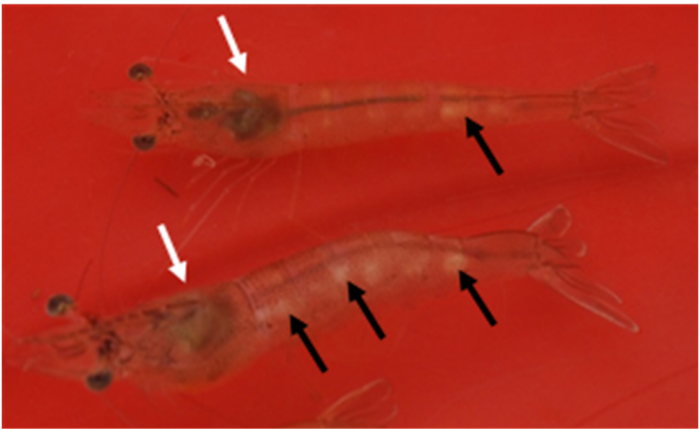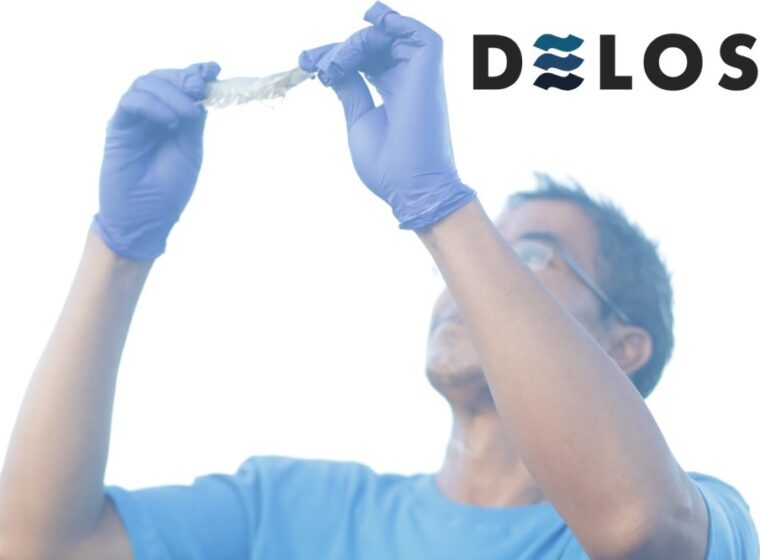
Covert Mortality Nodavirus or CMNV, is a pathogen in vannamei shrimp that causes VCMD or Viral Covert Mortality Disease. This disease causes shrimp to die at the bottom of the pond, which makes it difficult for farmers to detect them from the start.
The CMNV virus in shrimp was first discovered in China in 2009 with a mortality rate of up to 80%, causing huge economic losses for the farmers there.
However, it is also possible that this vannamei shrimp disease will spread to Indonesia if it is not prevented and handled properly. Therefore, in this article, let’s learn more about the Covert Mortality Nodavirus (CMNV)!
Also Read: Get to Know Vannamei Shrimp Probiotics and Its Benefit
Life Stadia of Shrimp that are Vulnerable to CMNV
In white shrimp, mortality due to Covert Mortality Nodavirus (CMNV) was found in the first month after stocking up to 60-80 days after stocking. However, shrimp from various stages are also potentially infected with this virus.
Therefore, farmers need to detect early on the presence of the virus that causes Viral Covert Mortality Disease.
Vertical transmission of this disease can also occur. In previous studies, it was known that wild shrimp E. Carinicauda was strongly suspected of being an intermediary for CMNV to spread to ponds.
Meanwhile, a study by Liu (2018) showed that Covert Mortality Nodavirus (CMNV) could be detected in oogonia, oocytes, spermatocytes, fertilized eggs, and nauplii.
Symptoms of CMNV Affected Shrimp
Shrimp waning due to Covert Mortality Nodavirus (CMNV) usually stays at the bottom of ponds rather than swimming on the surface. Over time, these shrimp will die. Therefore, CMNV disease is also referred to as “bottom death”.
While clinically, several symptoms are shown, including necrosis and atrophy of the hepatopancreas, empty stomach and intestines, softening of the outer shell of the shrimp, slowing growth, white muscles, and experiencing necrosis.
Also Read: This is the Process of Molting in Shrimp and How to Handle It
CMNV Diagnostic Methods

Diagnosing shrimp infected with Covert Mortality Nodavirus (CMNV) can be done using various methods, including Reverse Transcription Loop-mediated Isothermal Amplification (RT-LAMP), Nested Reverse Transcription PCR, gene sequencing, histopathology, RNA in-situ hybridization (ISH). Meanwhile, virus particles can be observed with Transmission Electron Microscopy (TEM).
How to Prevent CMNV in Vannamei Shrimp
As previously explained, the carrier part of the Covert Mortality Nodavirus (CMNV) comes from wild shrimp and other aquatic animals. Therefore, you must always be vigilant and monitor the possibility of this transmission.
In addition, considering that Covert Mortality Nodavirus (CMNV) can be detected early, make sure you cultivate shrimp fry that is healthy and free from various types of diseases.
Also Read: 7 Characteristics of High-Quality Vannamei Shrimp Seed
Find Out About CMNV and How to Handle It with DELOS!
Covert Mortality Nodavirus (CMNV) has a death rate of nearly 80% of the total shrimp population in ponds. Moreover, this disease is also not easily detected by the farmers considering that the infected shrimp will tend to stay at the bottom of the pond.
So it is very important to carry out routine checks and early detection of the CMNV virus that causes VCMD or Viral Covert Mortality Disease.
If you still need to figure out where to consult, DELOS is here and ready to help you. Together with a scientific team that has experienced for years and turns them off, DELOS is prepared to help you in handling if a disease is detected in your shrimp pond.
Immediately contact DELOS via contact@delosaqua.com or via the contact column on our website www.delosaqua.com to get a solution to your shrimp disease problem!




